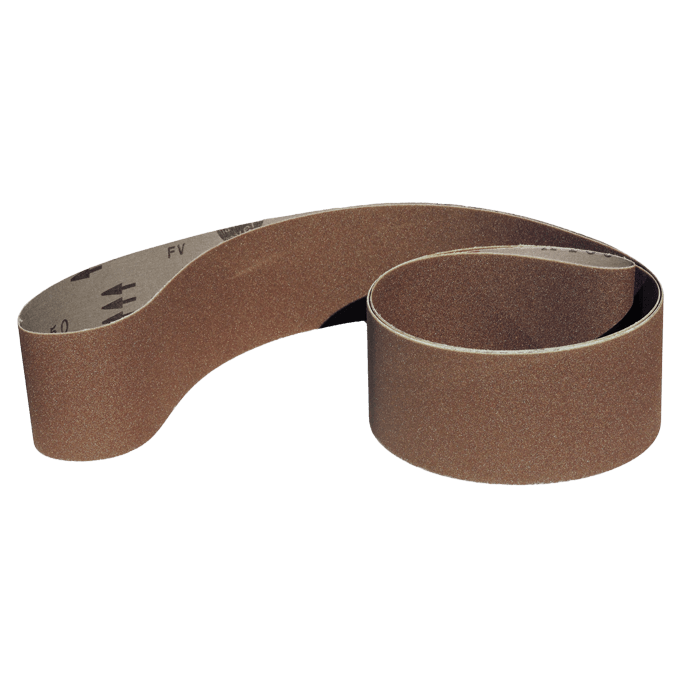
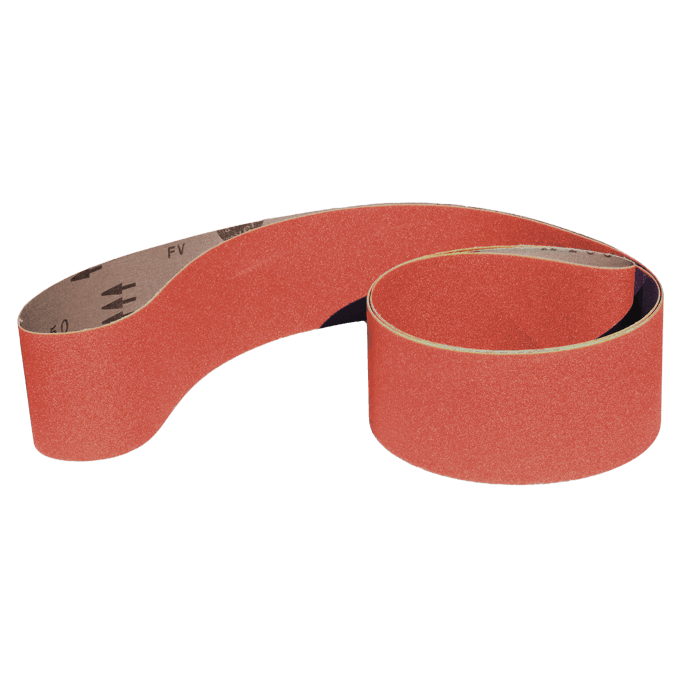
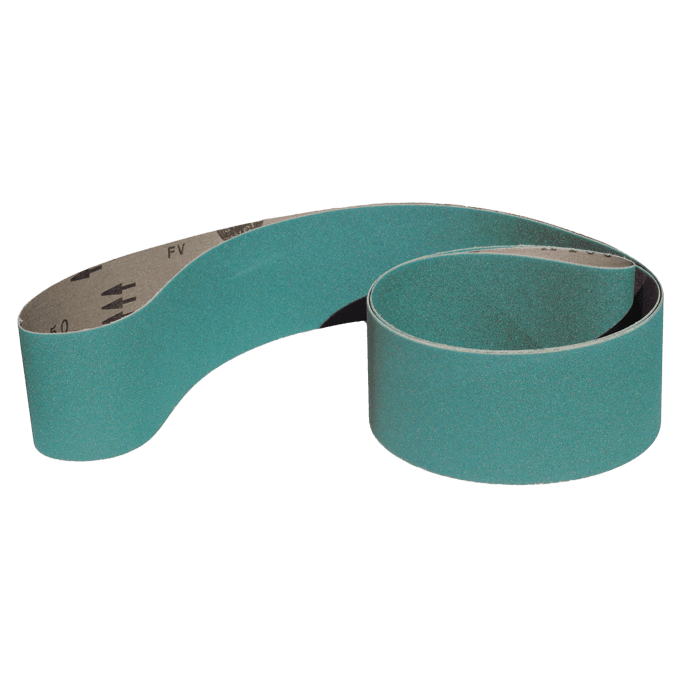
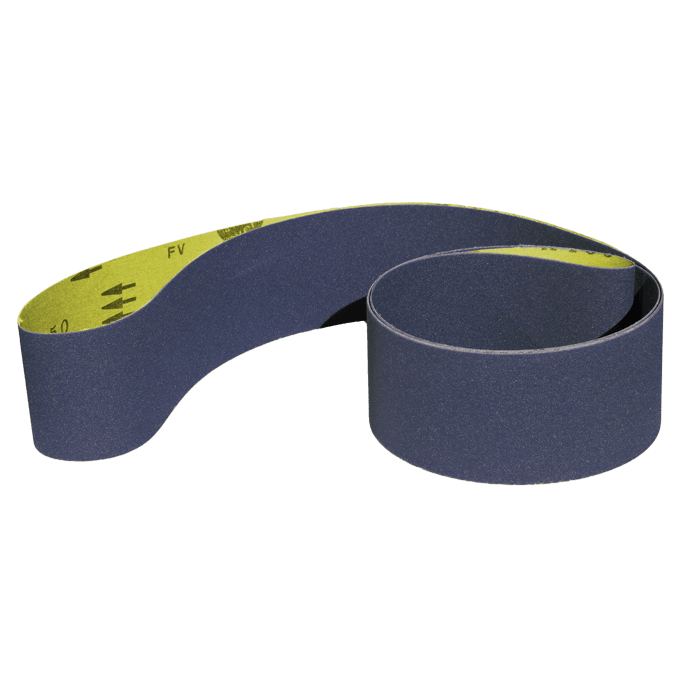
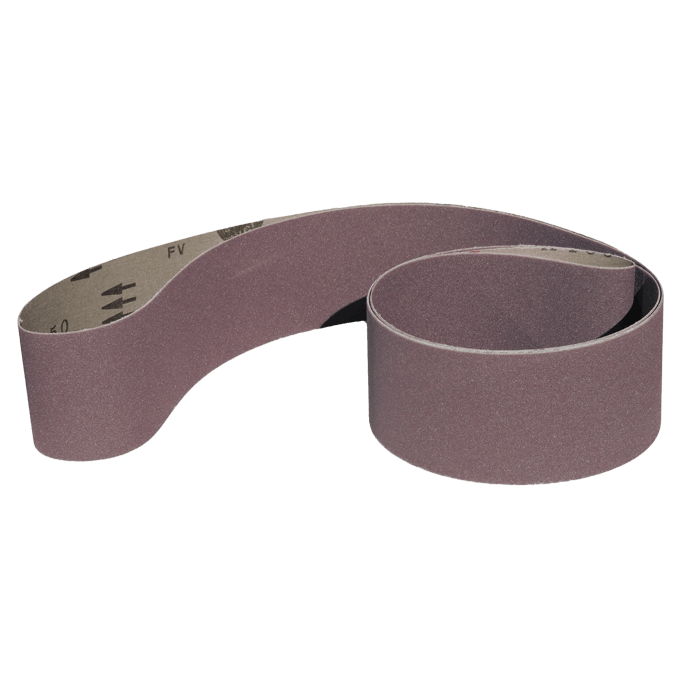

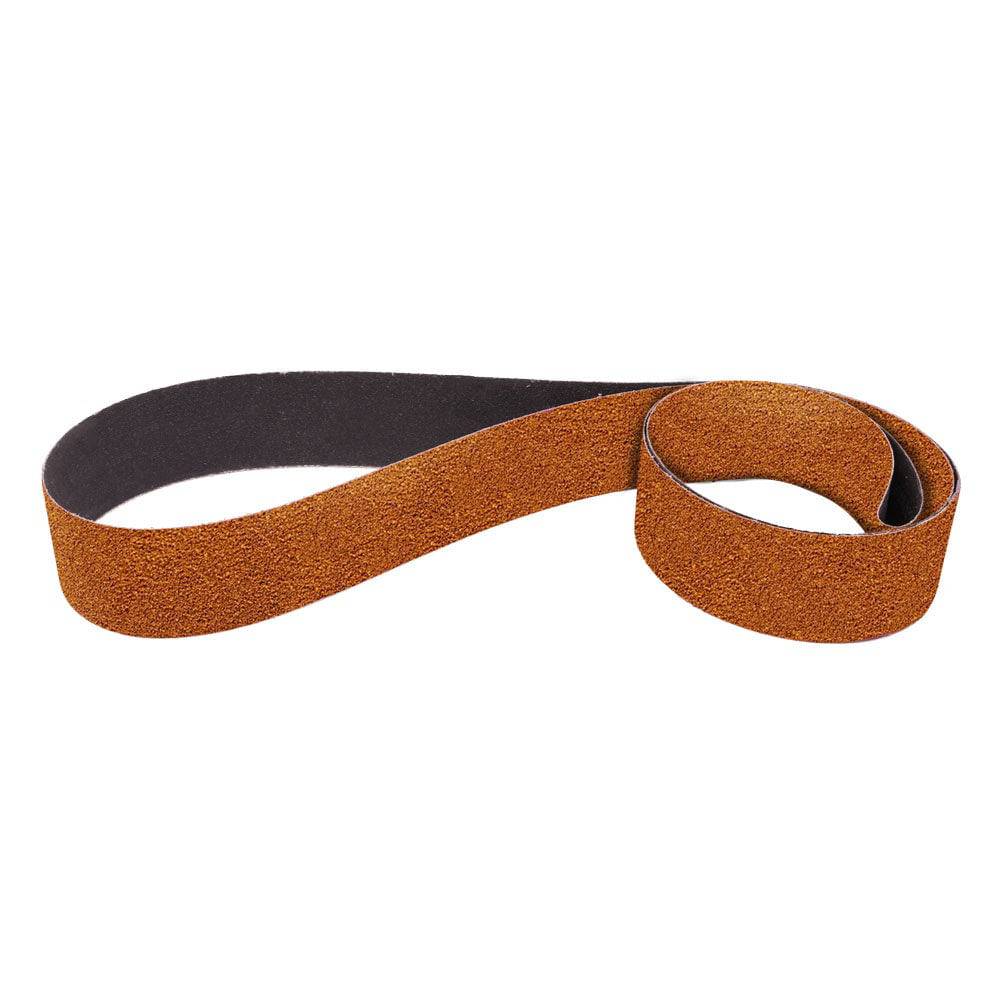
4" x 132" Sanding Belts for Finishing & Sharpening, 3 PACK
4" x 132" Sanding Belts for Finishing & Sharpening
WHAT IS FINISHING & SHARPENING?
Profiling is the development of the basic shape of a cutting instrument. Sharpening involves giving an edge to the profiled piece of steel/metal that was previously profiled and shaped.
WHAT DOES AN X OR J WEIGHT MEAN?
Abrasives are adhered to a backing material. That backing material's thickness (related to its flexibility) is categorized by the alphabet. Backings closer or rated as 'A' are substantially more flexible than the stiffest 'Y' weight backing you'll find on our site. Backings with an 'A', 'B', 'C', 'D', 'E', or 'F' backing are all considered paper backings. 'E' and 'F' weight backings are typically used to make belts as they are the most durable paper backings available (typically found in the wood industry) though still much less durable/thick than the full or partial synthetic backings like an 'X' or 'Y' weight. Typically various 'X' and 'Y' weight backings are used in metal working as the standard. Y weights are very sturdy and typically full synthetic poly materials versus some 'X' weights often being a cotton-poly blend material to allow for greater flexibility. J Flex refers to an even greater flexible backing material that is often used without a contact wheel and some slack in the belt so it can softly contour rounder shapes (e.g. a wooden handle).
WHY 4" X 132" SANDING BELTS?
4" x 132" sanding belts offer the best middle ground between heavy duty grinding and finer detail work blades can require—e.g. sharpening or detailed handle work. This makes the 4" x 132" size one of the most common belt sizes for knife making for profiling, bevel grinding, detailed edge sanding, and sharpening.
HOW DO MOST KNIFE MAKERS USE 4" X 132" ALUMINUM OXIDE BELTS?
Aluminum oxide is a general purpose abrasive material—it is a less expensive material that ceramic or zirconia alumina. Alumimum oxide is often called alumina in various other applications and is used in a wide array of abrasive products due to its characteristic high hardness. It's also used widely in these applications because the more expensive materials, ceramic and zirconia alumina, are often not needed in finer grits than 120 grit due to offering little over alumina oxide due to lower heat and durability requirements. Fundamentally, as the grit start to move higher (finer) than 120 grit, there is no benefit more expensive materials. This makes aluminum oxide a fantastic material for the majority of grits on soft to medium hardness materials that need to be shaped or ground down.
Keep in mind, that for very rough grinding or stock removal of something like ¼" steel, a 36 grit aluminum oxide belt will likely quickly run down in life due to the high heat generated at that coarse of a grit. In that case, check out our ceramic and zirconia alumina that while cost more per belt will have substantially longer life in high-heat situations that such coarse grits produce—ultimately saving the knife maker money.


